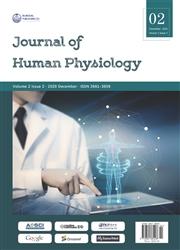Changes in Microvascular Reactivity and Systemic Vascular Resistance in Patients With Psoriasis
引用次数: 0
Abstract
The aim: of this pilot study was to explore local blood flow in psoriatic plaques and normal skin before and after provocations known to alter cutaneous vascular resistance in order to test whether the increased flow was caused by a failure of normal vascular control processes in plaque skin and what association it has with cardiovascular parameters. Material and methods: 11 patients who had a diagnosis of psoriasis vulgaris were enrolled in the study. Cutaneous blood flow was recorded over plaque and clinically normal skin. 10 healthy sex and age matched subjects were selected as controls. Blood flow in psoriatic and normal skin was measured by a single- channel Laser Doppler blood flowmeter (Blood Flow meter, AD Instruments Ltd., Oxford, UK). Post-occlusive reactive hyperaemia was assessed on the plaque and non-plaque site. Cardiovascular parameters: heart rate, systolic and diastolic pressure, cardiac output, and vascular resistance were continuously monitored by a Finapres (FINAPRES Medical Systems, The Netherlands). Results: In patients, basal-LD flow was significantly higher in psoriatic skin compared to nonpsoriatic skin and significantly higher than in the controls. However, the post-occlusive hyperaemia test did not reveal significant differences between the patients and control subjects. Systemic vascular resistance was significantly lower in patients with psoriasis compared to healthy individuals. Conclusions: The results suggest that reduced microvascular resistance is associated with a significant increase in blood flow of psoriatic plaques and with lower systemic vascular resistance.银屑病患者微血管反应性和系统血管阻力的变化
这项初步研究的目的是探索已知改变皮肤血管阻力的刺激前后银屑病斑块和正常皮肤中的局部血流量,以测试血流量增加是否是由斑块皮肤中正常血管控制过程的失败引起的,以及它与心血管参数的关系。材料和方法:11名诊断为寻常型银屑病的患者被纳入研究。记录斑块和临床正常皮肤上的皮肤血流量。选择10名性别和年龄匹配的健康受试者作为对照。通过单通道激光多普勒血液流量计(血液流量计,AD仪器有限公司,英国牛津)测量银屑病和正常皮肤中的血液流量。在斑块和非斑块部位评估闭塞后反应性充血。心血管参数:心率、收缩压和舒张压、心输出量和血管阻力由Finapres(Finapres Medical Systems,The Netherlands)持续监测。结果:在患者中,银屑病皮肤的基础LD流量显著高于非银屑病皮肤,也显著高于对照组。然而,闭塞后充血测试并未显示患者和对照受试者之间的显著差异。银屑病患者的系统血管阻力明显低于健康人。结论:研究结果表明,微血管阻力的降低与银屑病斑块血流量的显著增加和全身血管阻力的下降有关。
本文章由计算机程序翻译,如有差异,请以英文原文为准。
求助全文
约1分钟内获得全文
求助全文

 求助内容:
求助内容: 应助结果提醒方式:
应助结果提醒方式:


